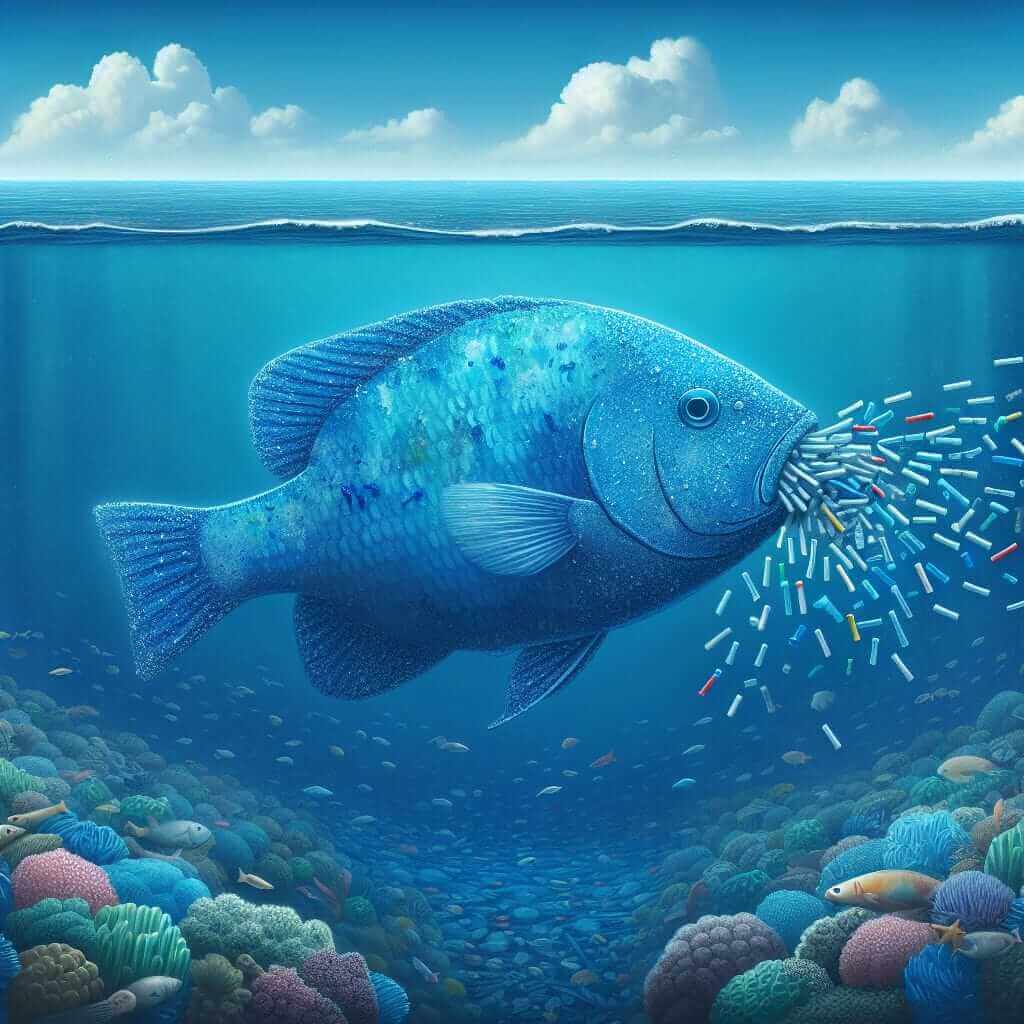In the IELTS Reading test, candidates often encounter texts on environmental issues, which are increasing in relevance and complexity. One such topic is the impact of microplastic pollution on marine life. Given the global concern about marine pollution, this subject has been featured frequently in past IELTS exams. Hence, understanding this topic is not only useful for the test but also raises awareness about a pressing environmental issue.
This article will provide a detailed IELTS Reading practice text on “What are the impacts of microplastic pollution on marine life?” along with questions and answers, analysis of common mistakes, vocabulary, and grammar tips. This will help you practice effectively and prepare for similar topics in the exam.
IELTS Reading Practice Text: The Impacts of Microplastic Pollution on Marine Life
Reading Passage
Microplastics, small plastic particles less than five millimeters in size, have infiltrated every corner of the marine environment. These particulates stem from a variety of sources, including the breakdown of larger plastic debris, microbeads in personal care products, and synthetic fibers from clothing. Due to their minuscule size, microplastics are readily ingested by a wide range of marine organisms, from the tiniest plankton to the largest whales.
The ingestion of microplastics poses numerous threats to marine life. For instance, filter-feeding organisms such as baleen whales and shellfish accumulate significant quantities of microplastics, which can lead to physical blockages and injuries. Additionally, microplastics often carry toxic chemicals that can leach into the tissues of animals, causing harmful effects ranging from decreased reproductive success to altered growth and development.
Studies have shown that microplastics can be transferred up the food chain. When small organisms consume microplastics, these particles can accumulate in larger predators that feed on them. This biomagnification means that top predators, including fish consumed by humans, might contain higher levels of microplastics and associated toxins. Consequently, humans could face health risks through the consumption of seafood contaminated with microplastics.
Efforts to mitigate the impacts of microplastic pollution on marine life include reducing plastic waste through policies and behavioral changes. Encouraging the use of natural and biodegradable products, improving waste management systems, and conducting further research on the ecological impacts of microplastics are crucial steps in addressing this issue.

Practice Questions
Section 1: Multiple Choice Questions
-
What are the primary sources of microplastics?
- A. Synthetic fibers, volcanic activity, and metal corrosion
- B. Breakdown of larger plastic debris, microbeads, synthetic fibers from clothing
- C. Natural erosion, sand particles, and fish scales
- D. Plant degradation, algae blooms, and sea salt
-
What is one of the health risks mentioned for humans regarding microplastic pollution?
- A. Respiratory diseases from inhaling microplastics
- B. Skin rashes from contact with microplastics
- C. Health risks through the consumption of seafood contaminated with microplastics
- D. Eye irritation from microplastics in water
Section 2: True/False/Not Given
-
Microplastics are only ingested by large marine animals.
- A. True
- B. False
- C. Not Given
-
Policies to reduce plastic waste can help mitigate microplastic pollution.
- A. True
- B. False
- C. Not Given
Section 3: Matching Information
Match the statement with the corresponding paragraph.
-
Transfer of microplastics through the food chain
- A. Paragraph 2
- B. Paragraph 3
- C. Paragraph 4
-
Sources of microplastics
- A. Paragraph 1
- B. Paragraph 2
- C. Paragraph 4
Answer Keys and Explanations
Answers
- B
- C
- B
- A
- B
- A
Explanations
- The passage specifies that microplastics come from the breakdown of larger plastic debris, microbeads, and synthetic fibers from clothing, making B the correct answer.
- The health risk for humans through consumption of contaminated seafood is discussed in the passage.
- The passage indicates that microplastics are ingested by a range of marine organisms, from tiny plankton to large whales, proving the statement false.
- The passage mentions efforts to mitigate microplastic pollution, including reducing plastic waste through policies.
- Paragraph 3 discusses how microplastics can be transferred up the food chain.
- Paragraph 1 lists the sources of microplastics.
Common Mistakes and Practice Tips
-
Mistake: Misunderstanding the Overall Structure of the Passage
Tip: Always read the passage completely before answering questions to get a good understanding of its structure and main ideas. -
Mistake: Overlooking Important Information in Charts or Tables
Tip: Pay close attention to all graphical information provided and ensure you integrate this into your overall understanding of the passage.
Vocabulary
- Mitigate (verb): /ˈmɪt.ɪ.ɡeɪt/ – to make less severe or serious.
- Biomagnification (noun): /ˌbaɪ.oʊ.mæɡ.nɪ.fɪˈkeɪ.ʃən/ – the concentration of toxins in an organism as a result of its ingesting other plants or animals in which the toxins are more widely dispersed.
- Ingestion (noun): /ɪnˈdʒes.tʃən/ – the process of taking in food or other substances into the body.
- Ecological (adjective): /ˌiː.kəˈlɒdʒ.ɪ.kəl/ – relating to the relationship between living organisms and their environment.
Grammar Focus: Relative Clauses
Example:
- Basic structure: …microplastics that can leach into the tissues of animals…
- Explanation: Relative clauses (using that, which, who, whom) provide additional information about a noun without starting a new sentence.
- Usage: Be sure to use them correctly to make your sentences more informative.
Final Tips
- Read regularly: Expose yourself to a variety of topics and texts.
- Practice skimming and scanning: These skills are crucial for answering different types of IELTS Reading questions.
- Expand your vocabulary: Focus on learning synonyms and how words function differently in various contexts.
By following this practice strategy and understanding the structure, vocabulary, and specific grammar points, you will be better prepared to tackle the IELTS Reading section, especially topics related to environmental issues like microplastic pollution.